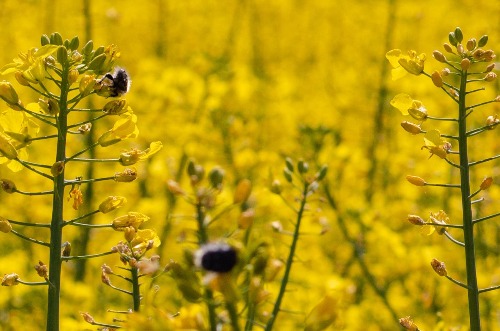A Positive Rapeseed Crop Forecast a Relief but Other Variables May Keep Market Tight

This year rapeseed prices have held high on the back of tight global supplies and a huge demand for rapeseed and rapeseed oil. The Euronext futures is trading at €757.75/mt up €233 YoY. In April, prices rallied to €1097.73/mt, the highest in its recent history.
For the marketing year 2021/22 harvest, the EU rapeseed market is expected to be better than last year. Production is projected to be 18.07 million mt, 1.7 million mt higher than the 2020/21 crop. Harvested area in 2021-22 is also projected at 5.68 million ha, higher than the 5-year trimmed average of 5.61 million ha and 7% higher than the 5.31 million ha the previous year.
The yield of the crop was also expected to be better than last year at 32.3 t/ha. However, a recent crop monitoring in Europe report by the European Union’s MARS has cut the yield down to 31.7 t/ha due to dryness. Earlier drier conditions have disturbed winter rapeseed and other cereals.
That notwithstanding, at the beginning of May, rapeseed was in reasonably good condition. Truly, a decent amount of wetness received at the end of May should cause a recovery in yield numbers to previous levels across Europe.
The 18.07 million mt crop output and a good Ukrainian crop might remove some of the heat from the market and keep market sentiment stable. The Ukrainian crop mostly in the southern growing areas of Dnipropetrovsk, Kherson and Odessa has established well owing to favourable weather conditions.
A good Ukrainian crop will someway help to offset any shortfalls in the European crop. Nonetheless, that support this time around is heavily reliant on how the Russia- Ukraine conflict unfolds. If facilities to harvest and crops and export capabilities are disrupted, the effects would be felt across the oilseeds market.
Within the European Union, the use of rapeseed oil as a biofuel has also been robust and set to strengthen in the near term. A substantial volume of seeds and oil will thus be needed to satisfy the demand from the biodiesel sector. After the EU’s decision to stop importing crude oil from Russia, the reliance on biofuels will be stronger than before.
The EU will hence have to supplement supplies with imports from Australia and Canada. The latter’s 2021 crop was affected by drought conditions with plantings for the new crop down 7% YoY. Although the positive forecast for the European is a good relief for the oilseeds market situation, other fundamental variables may keep the market tight.






